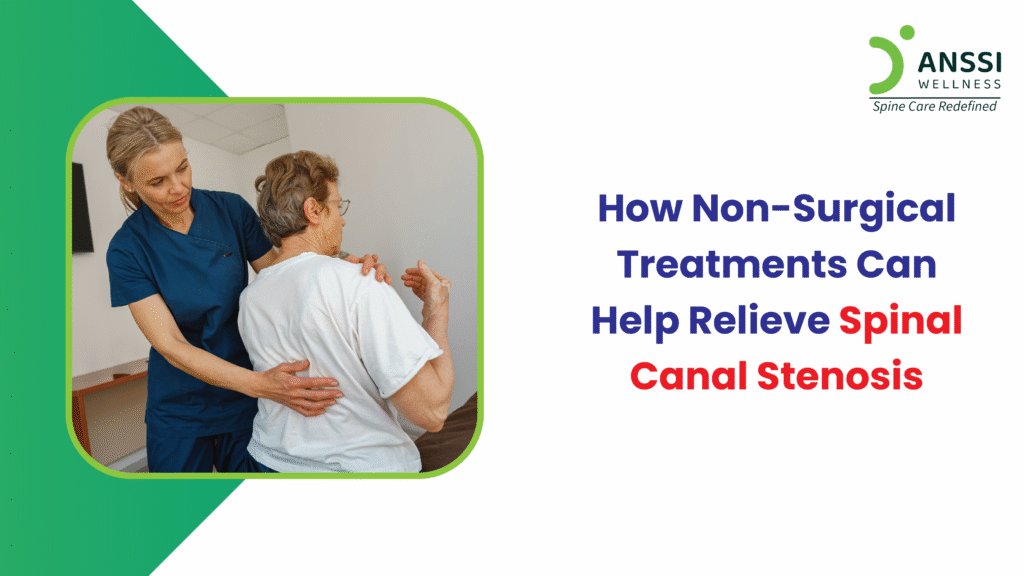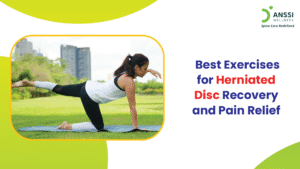Spinal canal stenosis is a common condition that occurs when the spaces within your spine narrow, putting pressure on the spinal cord and nerves. This can lead to symptoms such as back or neck pain, tingling, weakness, or numbness in the limbs, and difficulty walking or standing for long periods.
While surgery is sometimes necessary in severe cases, many individuals find significant relief through non-surgical treatments. These methods are safe, effective, and often sufficient to restore mobility and improve quality of life without the risks of invasive procedures.
Understanding the Causes and Impact
Spinal canal stenosis typically develops due to age-related wear and tear. The natural degeneration of the discs, thickening of ligaments, bone spurs from arthritis, or past spinal injuries can all contribute to the narrowing of the spinal canal. In some cases, congenital factors may become a factor.
This narrowing places pressure on the nerves, leading to symptoms that can range from mild discomfort to debilitating pain and mobility issues.
Left untreated, spinal stenosis can severely affect daily life, as simple activities like walking, bending, or standing for extended periods can become challenging. It’s essential to manage the condition early to prevent it from worsening and to maintain functional independence.
Benefits of Non-Surgical Approaches
Non-surgical treatments focus on symptom management, improving mobility, and addressing the root causes of pain without the risks and downtime associated with surgery. These conservative approaches are especially beneficial for older adults or those with medical conditions that make surgery risky. They can also serve as an effective first line of treatment, helping many people avoid surgery altogether.
One of the key benefits of non-surgical care is its holistic nature. It addresses not just pain, but posture, muscle strength, flexibility, and lifestyle habits that contribute to spinal health.
With regular application and professional guidance, these approaches can offer long-lasting relief and functional improvement.
Key Non-Surgical Treatments
1. Physiotherapy
Targeted physical therapy exercises play a crucial role in managing spinal stenosis. A physiotherapist will create a personalised program to strengthen the muscles around the spine, enhance flexibility, and stabilise the core.
These exercises not only reduce pain but also support the spine to prevent further narrowing and deterioration. Therapies such as ultrasound, manual therapy, and mobility drills can further complement the exercise routine.
2. Non-Surgical Spinal Decompression Treatment
It is a non-invasive, decompression-based treatment that gently stretches the spine to reduce pressure on compressed nerves and discs. It promotes nutrient flow and oxygenation to the affected area, helping the body to heal naturally.
Spinal decompression is particularly effective in cases where herniated discs or degenerative disc disease contribute to spinal stenosis. Patients often report reduced pain, improved posture, and greater flexibility after several sessions.
3. Postural Correction
Poor posture can aggravate spinal stenosis symptoms by placing extra stress on the spine. Correcting posture, whether while sitting, standing, or sleeping, can relieve strain within the spinal canal and reduce nerve irritation.
Ergonomic adjustments at home and work, along with conscious awareness of body alignment, are vital. Using lumbar supports, adjusting screen heights, and taking regular movement breaks can make a noticeable difference in symptom control.
4. Pain Management Techniques
Several conservative methods can help manage pain without the need for medication or injections.
These include:
- Heat Therapy: Helps relax tight muscles and improve blood circulation.
- Cold Therapy: Minimises inflammation and numbs sharp pain.
- Transcutaneous Electrical Nerve Stimulation (TENS): Uses mild electrical impulses to block pain signals to the brain.
These techniques are typically used in combination with other therapies to provide comprehensive relief.
5. Lifestyle Changes
Making small but consistent changes in daily habits can significantly impact spinal health.
- Weight Management: Excess body weight increases stress on the spine, worsening symptoms.
- Regular Low-Impact Exercise: Activities like walking, swimming, and yoga improve flexibility and blood flow to the spine.
- Avoiding Prolonged Sitting: Frequent movement throughout the day helps reduce spinal compression.
- Using Proper Body Mechanics: Learning to lift, bend, and carry properly can prevent additional strain on the spine.
When to Consider Expert Help
While non-surgical treatments are highly effective, it’s essential to consult a spine specialist if symptoms persist or worsen.
Signs that require prompt evaluation include:
- Severe or increasing pain
- Numbness or weakness in the legs or arms
- Loss of bowel or bladder control
- Difficulty walking or balancing
These could indicate more advanced compression of the spinal cord or nerves and may require immediate interventions.
About ANSSI:
ANSSI Wellness focuses on improving the quality of life for patients suffering from spinal issues, aiming to provide relief where other conventional treatments have failed. Through advanced non-surgical spinal decompression treatment, ANSSI is committed to helping patients avoid surgery and recover in a safe, effective, and compassionate environment.
Connect with ANSSI Wellness on LinkedIn, Instagram, and Facebook for expert guidance.



